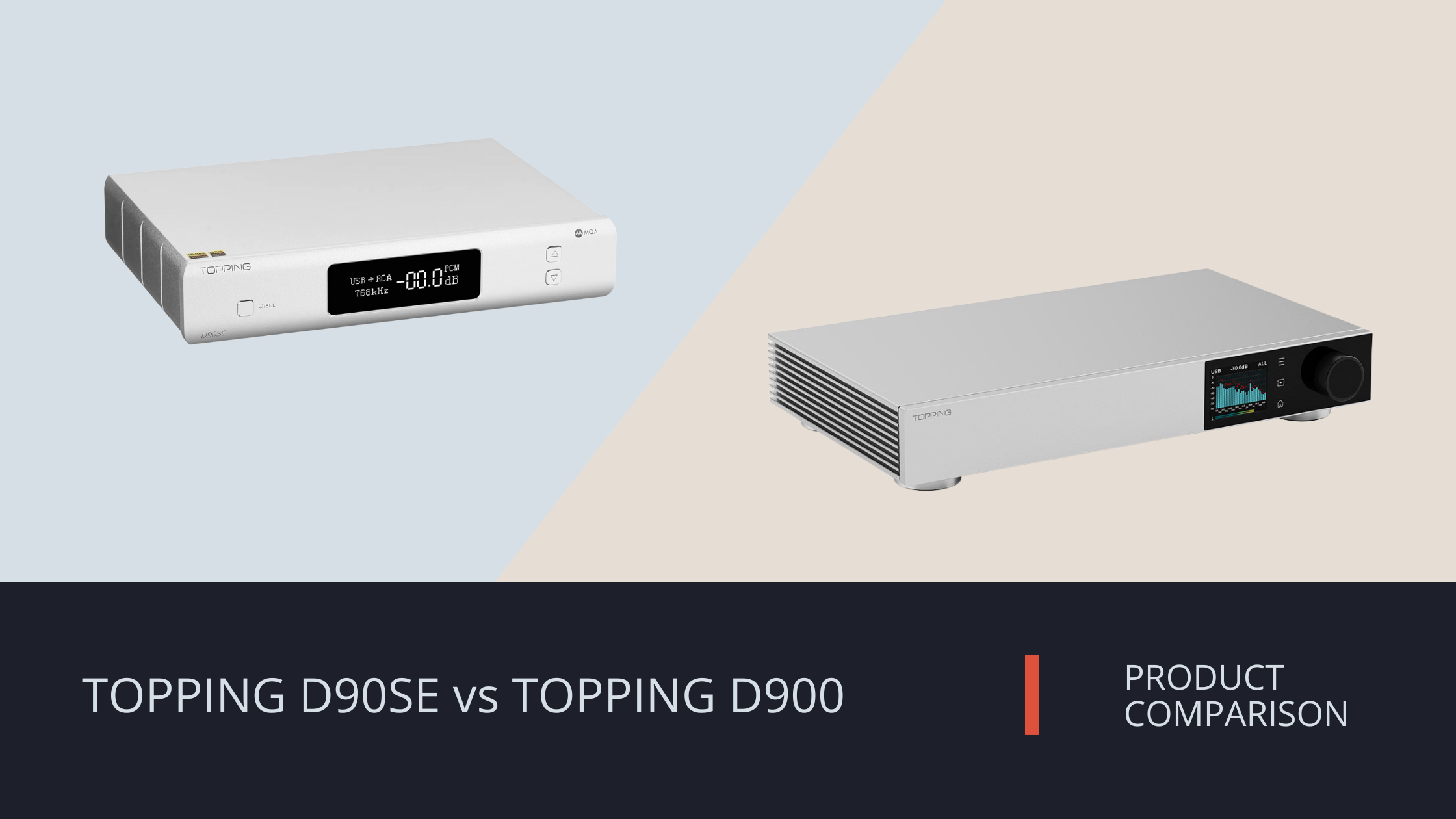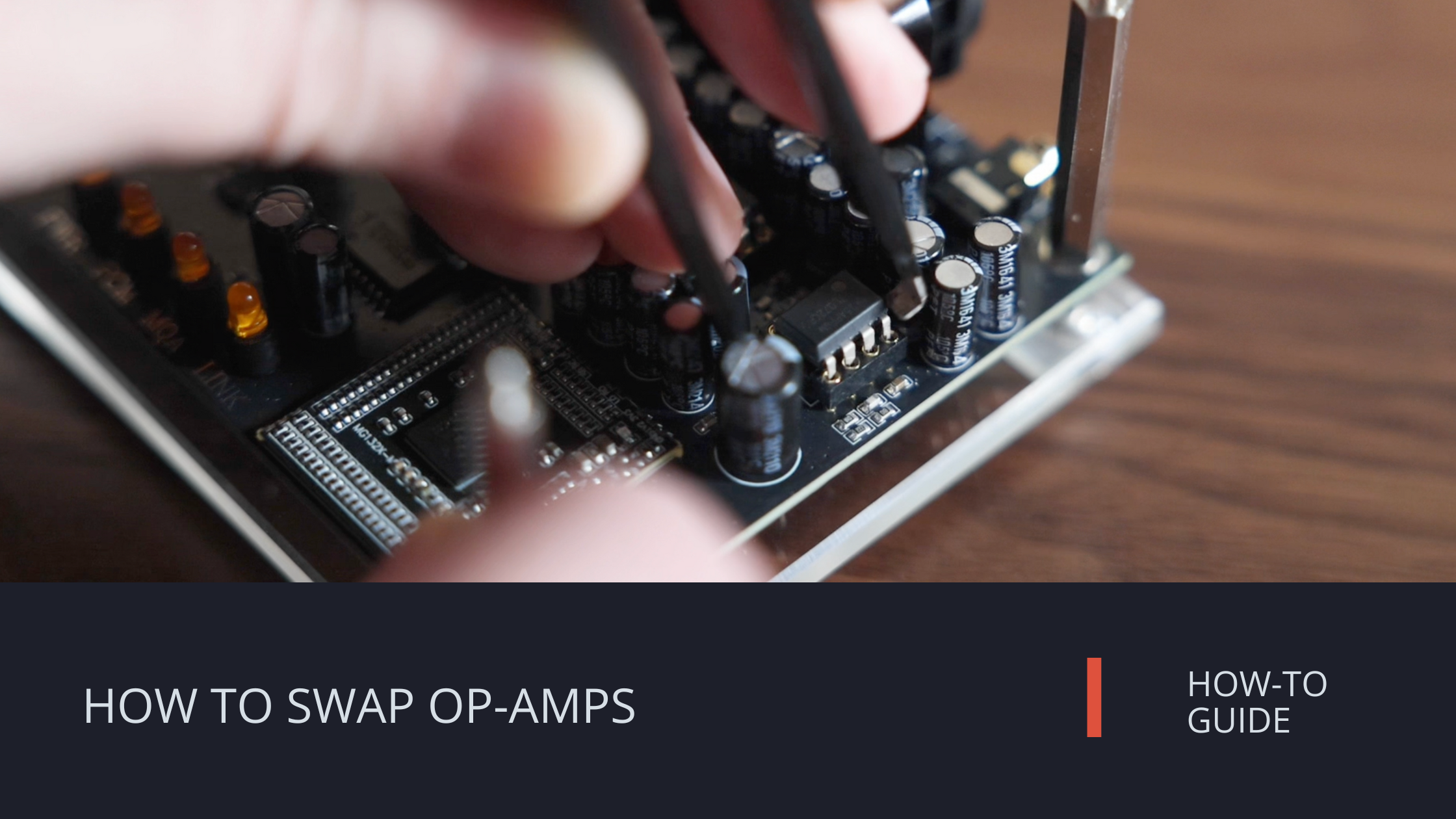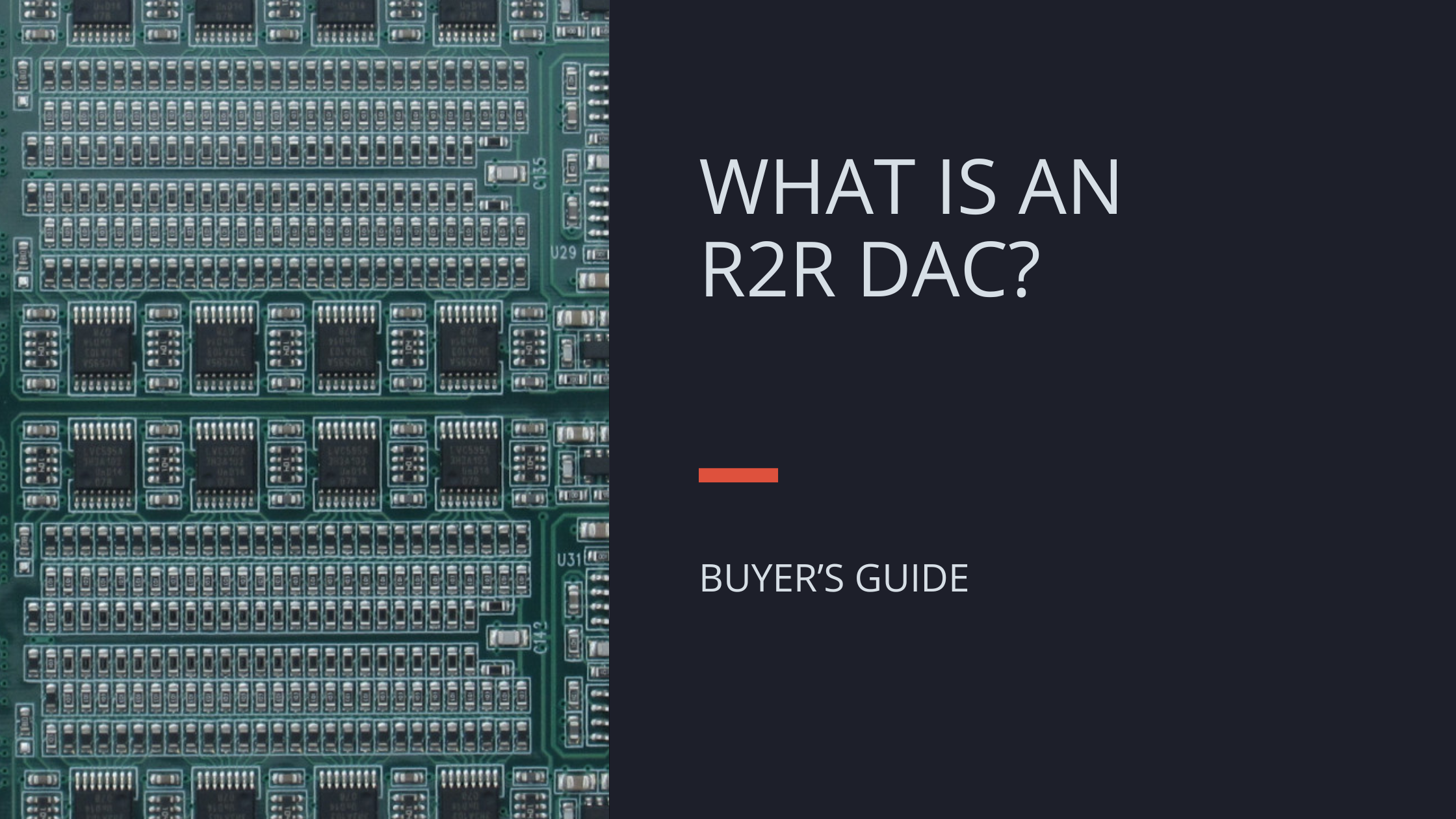
TOPPING D900 vs D90se
How two flagship TOPPING DACs differ in design, performance, and purpose
In this post, we’ll walk through how the TOPPING D900 and TOPPING D90SE differ in measurable performance, usability, and engineering design—and where each might fit best in a serious system.
Overview
The TOPPING D900 is the brand’s newest flagship DAC and preamp, built around TOPPING’s proprietary PSRM (Phase-Switching Reference Modulator) 1-bit discrete decoding system. With 32 conversion elements per channel, it achieves ultra-low distortion and a ~131 dB signal-to-noise ratio. Bluetooth 5.1 with LDAC and aptX Adaptive adds flexibility, while its preamp mode with memory-retained volume control makes it equally suited for desktop or full-size systems.
The TOPPING D90SE represents the peak of TOPPING’s ESS-based DAC engineering. Built on the ES9038PRO 8-channel chip, it focuses on transparency, stability, and compatibility with nearly any digital source. It offers fully balanced XLR and single-ended RCA outputs, preamp functionality, and selectable 4 V/5 V output voltage.
In rough terms:
- The D900 pushes TOPPING’s discrete architecture to its highest measured limits and adds system-integration features.
- The D90SE delivers reference-level transparency using a proven ESS platform, with broader compatibility and value.
Architecture & Conversion Approach
D900 — 32-element PSRM discrete 1-bit DAC
The D900 uses TOPPING’s latest 1-bit PSRM architecture, comprising 32 discrete switching elements per channel synchronized for ultra-linear conversion. Each channel’s output passes through a self-developed current-to-voltage (I/V) stage and precision-regulated power supplies. This design removes conventional delta-sigma noise shaping while maintaining high-frequency linearity and low distortion. Measured performance: THD+N < 0.000055 % and SNR ~131 dB.
D90SE — ESS ES9038PRO 8-channel DAC
The D90SE employs the ESS ES9038PRO DAC chip, an industry reference for low noise and distortion. Each channel uses parallel output stages to reduce noise and increase current drive. The result is precise conversion with a wide dynamic range and exceptional channel separation. Measured performance: THD+N ~ 0.00005 %, SNR > 124 dB.
Both architectures aim for linear, distortion-free conversion—but the D900 extends beyond chip-level designs with discrete control over timing, reference voltage, and power regulation.
Features & Connectivity Comparison
| Feature | D900 | D90SE |
|---|---|---|
| DAC architecture | 32-element PSRM 1-bit discrete | ESS ES9038PRO 8-channel |
| Bluetooth | 5.1 (LDAC / aptX Adaptive) | 5.1 (LDAC / aptX Adaptive) |
| Preamp / Volume mode | Hybrid digital/analog with memory | Digital volume with memory |
| Outputs | Balanced XLR + RCA | Balanced XLR + RCA |
| Output voltage | ~4.2–5.2 Vrms (XLR) / ~2.1–2.6 Vrms (RCA) | 4 V / 5 V (XLR) switchable / 2 V / 2.5 V (RCA) |
| Inputs | USB-B, USB-C, AES, I²S (LVDS), Coaxial, Optical | USB, AES, I²S (LVDS), Coaxial, Optical |
| Supported formats | PCM 768 kHz / DSD512 | PCM 768 kHz / DSD512 / MQA |
| Trigger ports | Yes (In/Out) | No |
| PEQ / Tone control | 10-band PEQ | Digital filters only |
| Network / Streaming | None (external streamer required) | None (external streamer required) |
Performance Comparisons & Trade-offs
Noise floor and dynamic range
The D900 measures at THD+N < 0.000055 % / SNR ~131 dB, while the D90SE achieves THD+N ~ 0.00005 % / SNR > 124 dB. Both figures are well below audible thresholds, but the D900 maintains its distortion profile more consistently across different loads and frequencies due to its discrete modulation system.
Output behavior and gain structure
The D900’s balanced output (~4 – 5 Vrms) integrates smoothly with balanced amplifiers and powered monitors. The D90SE adds switchable 4 V/5 V output modes, useful when driving professional equipment or long cable runs.
Control and user interface
Both units use OLED displays and aluminum remotes for menu-based control. The D900’s interface focuses on DAC and preamp modes with trigger synchronization; the D90SE adds selectable filters and display adjustments.
Flexibility vs Specialization
- D900: Best suited for listeners who want discrete 1-bit architecture, preamp control, and wireless flexibility in one chassis.
- D90SE: Ideal for users who value ESS-based neutrality, simple operation, and reference-grade transparency at a lower cost.
Where Each Makes Most Sense
- If you want integrated preamp control: Choose the D900 for its volume memory, trigger ports, and hybrid preamp mode.
- If your system already includes a preamp or balanced amp: The D90SE offers top-tier conversion without redundancy.
- If you value wireless and multi-input convenience: The D900 adds Bluetooth LDAC and broader connectivity.
- If budget is a concern: The D90SE delivers flagship-level conversion for significantly less.
- If your goal is ultimate precision: The D900’s discrete design represents TOPPING’s most technically advanced DAC to date.
Product Highlights
TOPPING D900
- 32-element PSRM discrete 1-bit architecture
- THD+N < 0.000055 % / SNR ~131 dB
- 4.2 – 5.2 Vrms (XLR) / 2.1 – 2.6 Vrms (RCA)
- Bluetooth 5.1 (LDAC / aptX Adaptive)
- PCM up to 768 kHz / DSD512
- 10-band PEQ and preamp mode with memory
- Trigger ports for system sync
- Price: ≈ $1,799 USD
TOPPING D90SE
- ESS ES9038PRO 8-channel DAC architecture
- THD+N ~ 0.00005 % / SNR > 124 dB
- 4 V / 5 V balanced output modes
- Bluetooth 5.1 (LDAC / aptX Adaptive)
- PCM 768 kHz / DSD512 / MQA support
- Digital volume with memory and filter selection
- Balanced XLR and RCA outputs
- Price: ≈ $899 USD


